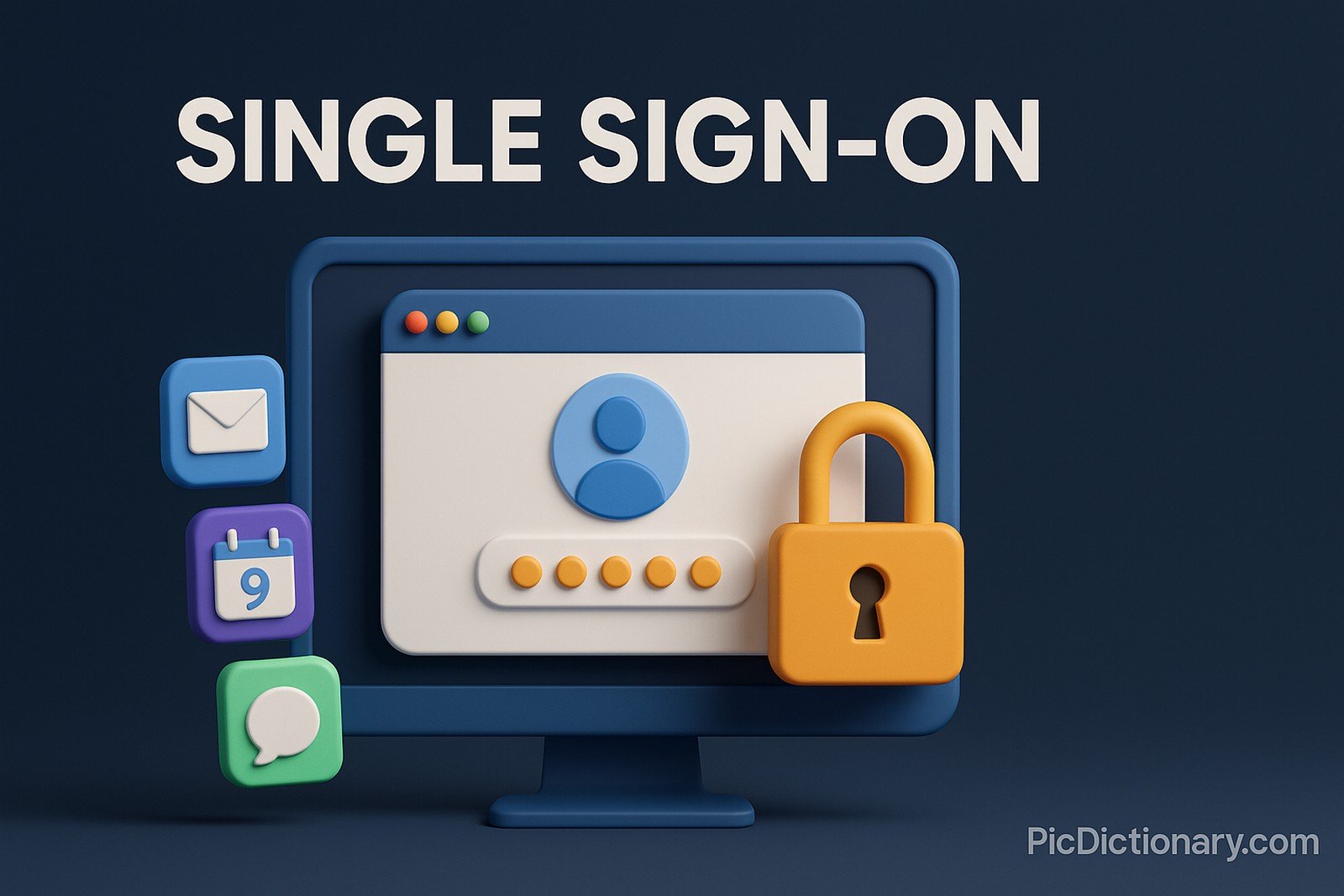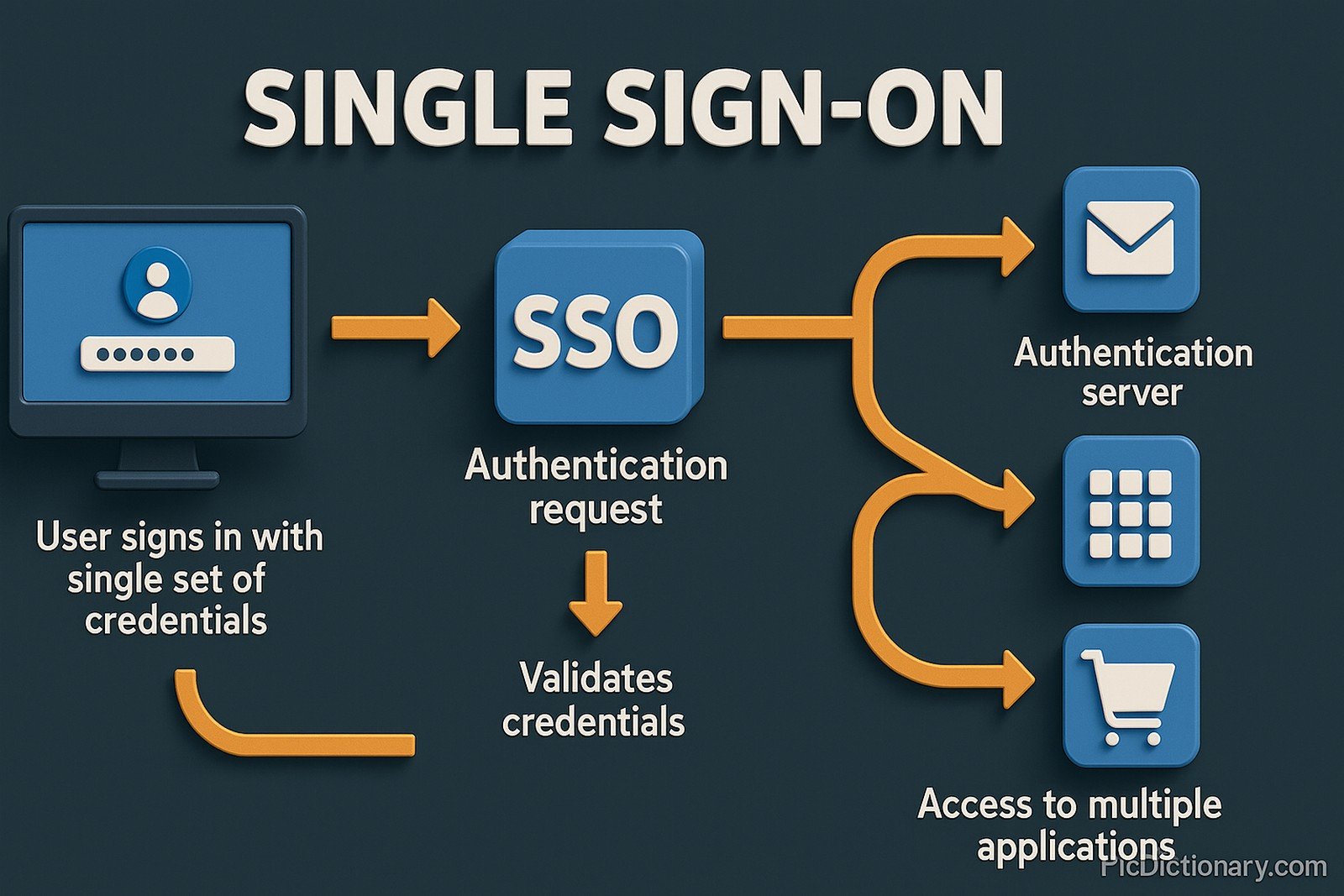Single Sign-On (SSO)

Quick Navigation:
- Single Sign-On (SSO) Definition
- Single Sign-On (SSO) Explained Easy
- Single Sign-On (SSO) Origin
- Single Sign-On (SSO) Etymology
- Single Sign-On (SSO) Usage Trends
- Single Sign-On (SSO) Usage
- Single Sign-On (SSO) Examples in Context
- Single Sign-On (SSO) FAQ
- Single Sign-On (SSO) Related Words
Single Sign-On (SSO) Definition
Single Sign-On (SSO) is an authentication process that allows a user to access multiple applications or systems with a single set of login credentials. Technically, it works by storing authentication tokens that can be shared across different services, enabling seamless switching without requiring the user to log in multiple times. SSO is widely used in enterprise environments, cloud services, and online platforms to improve user experience and security by reducing password fatigue and centralized authentication.
Single Sign-On (SSO) Explained Easy
Imagine having one magic key that opens your house door, your school locker, and your bike lock. You don’t need different keys or to remember many combinations; just one key works everywhere. That’s what Single Sign-On (SSO) does for the internet — one username and password let you use different websites and apps without logging in again and again.
Single Sign-On (SSO) Origin
The concept of Single Sign-On (SSO) originated from the need for streamlined access management as digital services expanded. Early developments came from corporate network environments in the 1990s, followed by its adoption in web-based services as organizations sought to enhance convenience and security.
Single Sign-On (SSO) Etymology
The term "Single Sign-On" combines "single" (one) and "sign-on" (logging into a system), emphasizing the idea of one-time authentication for multiple access points.
Single Sign-On (SSO) Usage Trends
With increasing cybersecurity threats and the proliferation of digital services, Single Sign-On (SSO) has seen exponential growth. Today, it’s a standard in cloud services, educational platforms, enterprise software, and even social media platforms. The demand for efficient and secure user authentication has made SSO a preferred choice for organizations worldwide.
Single Sign-On (SSO) Usage
- Formal/Technical Tagging:
- Identity Management
- Access Control
- Authentication - Typical Collocations:
- "SSO implementation"
- "SSO integration"
- "secure Single Sign-On"
- "SSO provider"
Single Sign-On (SSO) Examples in Context
- Logging into your Google account and automatically accessing Gmail, Drive, and YouTube without logging in again.
- Enterprise environments where employees use one login to access email, project management tools, and HR portals.
- Social media platforms where using your Facebook or Google account credentials lets you log into third-party apps.
Single Sign-On (SSO) FAQ
- What is Single Sign-On (SSO)?
SSO allows users to log in once and access multiple applications without repeated authentication. - How does Single Sign-On (SSO) work?
It uses authentication tokens to validate users across different services after a single login. - Is SSO secure?
When implemented correctly, SSO enhances security by reducing password reuse and enabling centralized access control. - Can SSO be used for cloud applications?
Yes, cloud platforms frequently use SSO for seamless user authentication. - What are the benefits of SSO?
Benefits include improved user experience, centralized security management, and reduced password fatigue. - Are there risks associated with SSO?
Yes, if compromised, a single set of credentials could grant access to multiple systems, making strong security measures vital. - What protocols are used in SSO?
Common protocols include SAML, OAuth, and OpenID Connect. - Does SSO support multi-factor authentication?
Yes, SSO can be combined with MFA for enhanced security. - Can SSO be used in mobile applications?
Absolutely, many mobile apps support SSO for smooth authentication across services. - Is SSO suitable for small businesses?
Yes, SSO solutions are scalable and can benefit organizations of any size.

Single Sign-On (SSO) Related Words
- Categories/Topics:
- Identity Management
- Cybersecurity
- Authentication Systems
Did you know?
In 2017, a global tech company reduced over 300 logins for employees down to a single login system using SSO, improving productivity and significantly reducing IT support requests for password resets.
PicDictionary.com is an online dictionary in pictures. If you have questions or suggestions, please reach out to us on WhatsApp or Twitter.Authors | Arjun Vishnu | @ArjunAndVishnu

I am Vishnu. I like AI, Linux, Single Board Computers, and Cloud Computing. I create the web & video content, and I also write for popular websites.
My younger brother, Arjun handles image & video editing. Together, we run a YouTube Channel that's focused on reviewing gadgets and explaining technology.



Comments powered by CComment